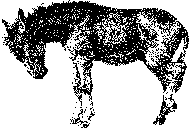
Palm Sunday
Ye whose hearts are beating high
With the pulse of Poesy,
Heirs of more than royal race,
Fram’d by Heaven’s peculiar grace,
God’s own work to do on earth,
(If the word be not too bold,)
Giving virtue a new birth,
And a life that ne’er grows old—
Sovereign masters of all hearts!
Know ye, who hath set your parts?
He who gave you breath to sing,
By whose strength ye sweep the string,
He hath chosen you, to lead
His Hosannas here below;—
Mount, and claim your glorious meed;
Linger not with sin and woe.
But if ye should hold your peace,
Deem not that the song would cease—
Angels round his glory-throne,
Stars, His guiding hand that own,
Flowers, that grow beneath our feet,
Stones in earth’s dark womb that rest,
High and low in choir shall meet,
Ere His Name shall be unblest.
Lord, by every minstrel tongue
Be thy praise so duly sung,
That thine angels’ harps may ne’er
Fail to find fit echoing here:
We the while, of meaner birth,
Who in that divinest spell
Dare not hope to join on earth,
Give us grace to listen well.
But should thankless silence seal
Lips, that might half Heaven reveal,
Should bards in idol-hymns profane
The sacred soul-enthralling strain,
(As in this bad world below
Nobles things find vilest using,)
Then, thy power and mercy shew,
In vile things noble breath infusing;
Then waken into sound divine
The very pavement of thy shrine,
Till we, like Heaven’s star-sprinkled floor,
Faintly give back what we adore.
Childlike though the voices be,
And untunable the parts,
Thou wilt own the minstrelsy,
If it flow from childlike hearts.
John Keble
(1792 - 1866)















